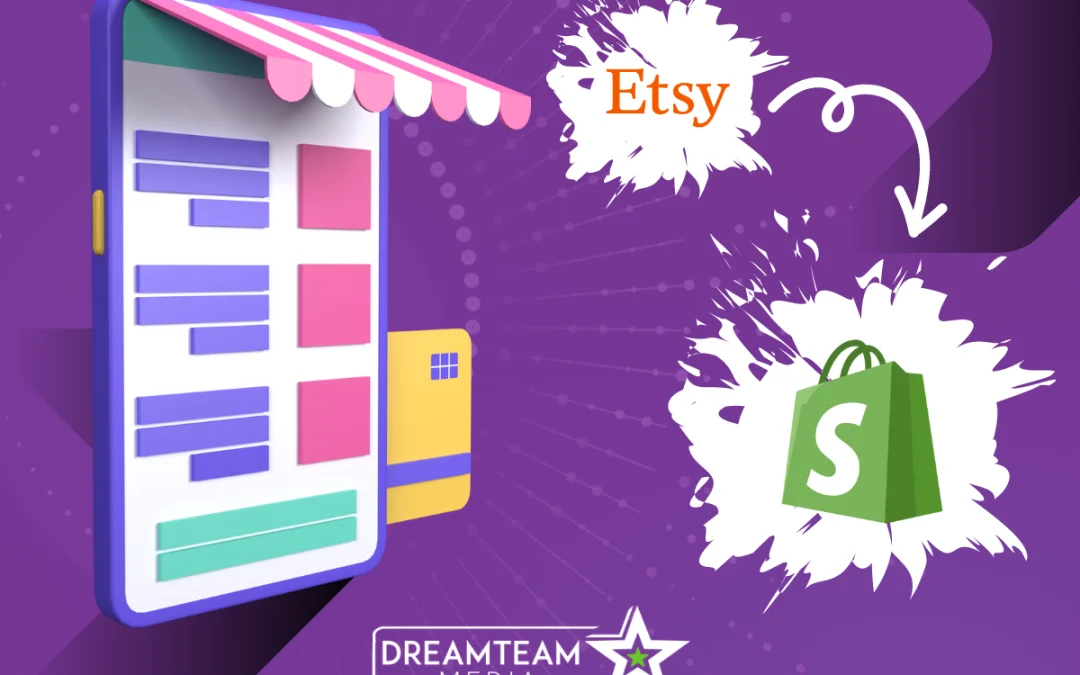If you’re looking for a more customizable and scalable platform for your online store, moving from Etsy to Shopify may be a wise choice. While Etsy has its benefits, such as a built-in customer base and easy setup, it also has limitations in terms of branding and controls over your store. On the other hand, Shopify offers a wide range of features and apps that can help you tailor your store to your specific needs and access a more extensive customer base. Additionally, Shopify offers better control over your store’s branding and design, which can help you stand out from competitors. If you’re serious about growing your online store, moving to Shopify may be worth considering. BIG TIME!
1. Fees over fees
Setting up a store on Etsy is simple and easy to maintain. However, any items sold on this platform incur different fees: a listing fee, a transaction fee, and a payment processing fee. Keeping these fees separate can lead to losing track of the costs associated with selling on the platform. After adding up all of the fees, what remains of your profit margin? While Shopify charges a fixed fee monthly, there is no transaction fee in between. You have more flexibility in offering the best prices for your customers—and more margin for you.
2. Brand recognition issue
With so many brands put into one big basket called “Etsy,” the customers search for items rather than brands. Eventually, you will need help to make customers remember your brand and products in the competitive marketplace on Etsy. Selling on Etsy may work in the short term and at the start of your business launch, but in time, you will be “someone who sells something” on Etsy. Your store may get lost in the mix in a market with many choices. There are so many options in just a few clicks or searches.
Moving to an independent eCommerce platform helps you build your brand name, image, and recognition. You become “this brand sells these products.” With your independent store, you have more options and autonomy over your marketing, which will help popularize your brand and products. By building your eCommerce store, you differentiate yourself with a logo, theme, online store vibe, sales, rewards, discounts, and so much more. You have the means to offer the best shopping experience for customers while maintaining control over your costs.
3. Organic traffic matters
We live in an era of the side hustle. As a result, the demand for eCommerce solutions for the solopreneur grows. Search engines drive traffic to websites, and search engines, like Google and Bing, aim to give people what they want to see. By placing your product on a marketplace site like Etsy, the obstacle keeping the searcher from finding your product lies in organic traffic. Even if your product attracts organic traffic to the Etsy platform, the challenge becomes how you measure, analyze, and optimize this data point. On Etsy, your store URL is a subdomain of Etsy. A search engine considers each URL a location on the internet. You do not have transparency or control over how search engines prioritize your URL in searches.
For this reason, having a domain that you own and optimize remains the key to attracting new shoppers. Shopify offers free, user-friendly tools to enhance your Search Engine Optimization. Creating product listings with descriptions and prices on the Shopify platform simultaneously generates your SEO description. Additionally, Shopify uses coding language that makes its sites load faster. Page speed is an essential factor for organic search rankings.
4. Cross-platform listings
The market gets more challenging as competition grows. Listing your products on Etsy creates the unintended consequence of putting you in your comfort zone. You can’t grow in your comfort zone. With seamless integrations between Shopify, Facebook, Instagram, and Google Merchant Store, your products will show up everywhere with audience interaction without extra work. Customers can shop for your items directly on social media without navigating anywhere else. The key to e-commerce success is making your products visible and available anywhere customers shop.
5. Loyalty and Remarketing
The importance of e-commerce growth falls into how you analyze and interpret your data and the customer shopping journey. Data tells a story, so you want to have all the details to understand the narrative entirely. As we mentioned in our previous blog about Five Digital Marketing Terms You Should Know (Today), one of the terms is “Conversion Rate.” The rate can be anything from pageviews, sales, users, clicks, and impressions, to time spent on the site. The marketing funnel and each customer journey step should drive how you identify unique conversion rates.
Once you complete the metrics you need, build customer loyalty and remarket to them. Setting up your store under the roof of Etsy creates a blindspot in marketing analytics and advertising. Shopify optimizes your store experience and strengthens your marketing efforts. After connecting your social media with the store, not only will products gain visibility, but you will gain the capability to advertise products on social media platforms. Take this further, and utilize tracking tools, for example, Facebook pixel, to remarket to shoppers to draw them back to your store as they move through their buyer’s journey.
Undoubtedly, each eCommerce solution comes with pros and cons. Solopreneurs tend to grow organically. Before Etsy, an artisan may start in a marketplace like a farmer’s market or set up a table at a few special events. As popularity and demand grow, the business may grow to wholesaling products to a brick & mortar retailer or opening one’s brick & mortar store. Don’t let the digital version of this evolution of the solopreneur confuse you. If you are ready to let your brand shine on its own, it may be time to take the next step in growth.

